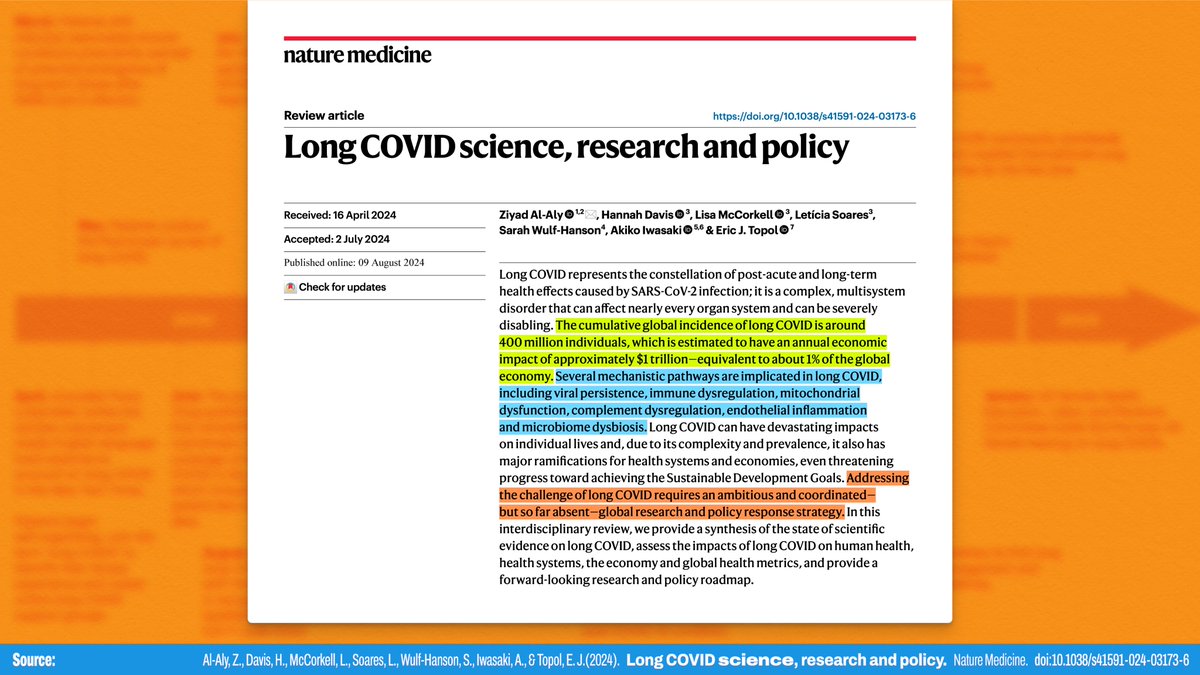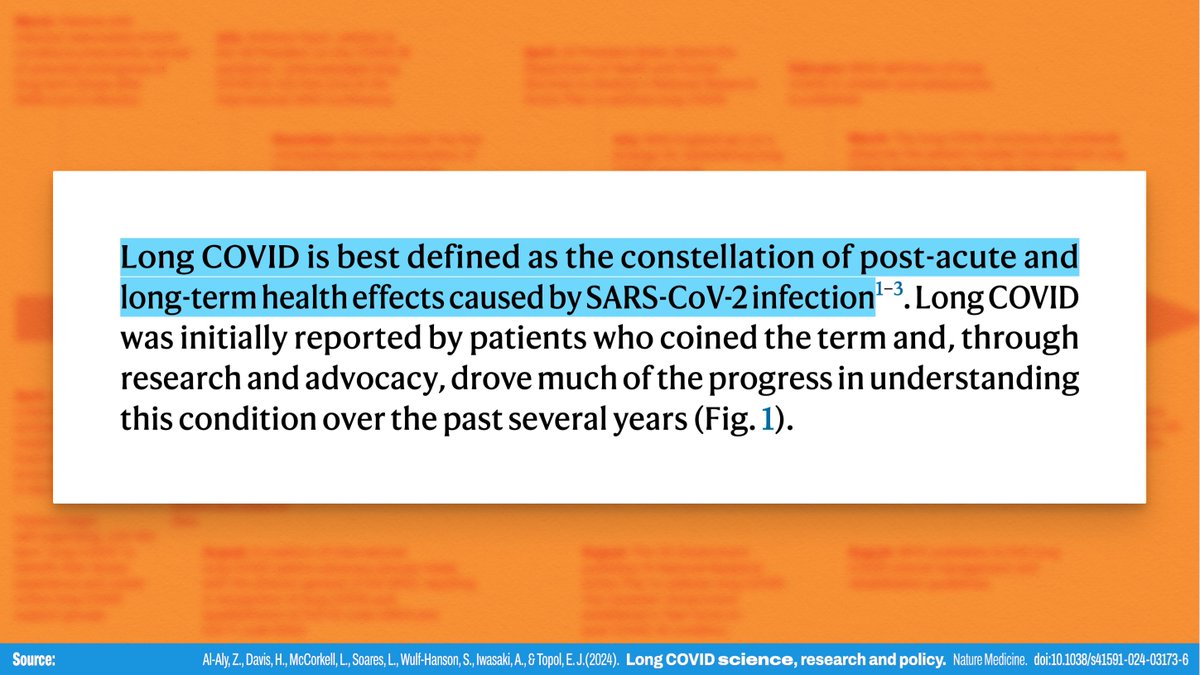
#DevRel, Coder, Writer, Raconteur. #LongCovid ally/loudmouth. 🇺🇸in🇨🇦 he;cis;bi. Tweets: research analyses, public health, cognition, linguistics, ADHD, tech
15 subscribers
How to get URL link on X (Twitter) App


![“8. Performance of Nuclear Power Plants Affected by the Blackout On August 14, 2003, nine U.S. nuclear power plants experienced rapid shutdowns (reactor trips) as a consequence of the power outage. Seven nuclear power plants in Canada operating at high power levels at the time of the event also experienced rapid shutdowns. […]. Many non-nuclear generating plants in both countries also tripped during the event. Numerous other nuclear plants observed disturbances on the electrical grid but continued to generate electrical power without interruption. […] - The severity of the grid transient...](https://pbs.twimg.com/media/G0Q9wDEXkAAknYM.jpg) If there is a widespread disruption in the service area of, e.g., a nuclear power plant, it shuts down for safety. Massive blackouts like in 2003 or in Spain this year are caused by safety systems!
If there is a widespread disruption in the service area of, e.g., a nuclear power plant, it shuts down for safety. Massive blackouts like in 2003 or in Spain this year are caused by safety systems!



https://twitter.com/plagueprose/status/1885315243506626641That's not to say that it's impossible to use solid-state media for long-term storage. It's just that anything with durability guarantees gets prohibitively expensive quickly. Spinning hard drives—as well as DVDs and Blu-ray discs!—are your friend.



 So let's look at this a bit more critically. Here is the "evidence" Nukit provided that the didn't say anything racist. First of all, these aren't the comments in question, but it's worth a look anyway.
So let's look at this a bit more critically. Here is the "evidence" Nukit provided that the didn't say anything racist. First of all, these aren't the comments in question, but it's worth a look anyway.


 Broadly speaking, there are two groups of acute covid outcomes involving dyspnea (shortness of breath) as a long-term symptom:
Broadly speaking, there are two groups of acute covid outcomes involving dyspnea (shortness of breath) as a long-term symptom:

 This paper reanalyzes the same data from the April 2023 paper in Nature that cast doubt on the Huanan Market hypothesis (pictured).
This paper reanalyzes the same data from the April 2023 paper in Nature that cast doubt on the Huanan Market hypothesis (pictured).



 Kasper P. Kepp "has been engaged in the pandemic debate in Danish media and social media, where he has been critical of the studied zero-covid groups"
Kasper P. Kepp "has been engaged in the pandemic debate in Danish media and social media, where he has been critical of the studied zero-covid groups"

 Here's the takeaway: The *Main protease* (Mpro) of SARS-CoV-2—an enzyme that cuts up viral polyproteins—can also cleave a few host coagulation factors in a way that ACTIVATES them and BEGINS the blood clot cascade.
Here's the takeaway: The *Main protease* (Mpro) of SARS-CoV-2—an enzyme that cuts up viral polyproteins—can also cleave a few host coagulation factors in a way that ACTIVATES them and BEGINS the blood clot cascade.



 This one is dense, so I'll start with the takeaways, then some background, then the details.
This one is dense, so I'll start with the takeaways, then some background, then the details.

 So as you probably know (or at least, should know), prolonged fatigue is one of the most common and significant long-term consequences of COVID, even after mild cases.
So as you probably know (or at least, should know), prolonged fatigue is one of the most common and significant long-term consequences of COVID, even after mild cases.

 This thread will have three things:
This thread will have three things:

 This was a very large cross-sectional study that looked at a national population, conducted by Italy's census agency. They controlled for covariates including socioeconomic status, age, and gender, then clustered and stratified the population as appropriate.
This was a very large cross-sectional study that looked at a national population, conducted by Italy's census agency. They controlled for covariates including socioeconomic status, age, and gender, then clustered and stratified the population as appropriate.!["Data on BW consumption were obtained from the “Aspects of Daily Life” survey on households, conducted by the Italian National Institute of Statistics (ISTAT) [19]. ... The aim of the survey is to identify a variety of behavioral dimensions and aspects of daily life. ... We analyzed data from the 2021 edition of the survey, which included 45,597 individuals and 20,000 families, focusing on those who were 18 years or older at the time of the survey. ... a distinct stratum of municipalities with larger populations, labeled as self-representative (SR), and other municipalities, designated...](https://pbs.twimg.com/media/GVDBF48W4AAKDgi.jpg)


 This is definitely the definition for Long COVID I'll be explicitly using from now on: Long COVID is "the constellation of post-acute and long-term health effects caused by SARS-CoV-2 infection."
This is definitely the definition for Long COVID I'll be explicitly using from now on: Long COVID is "the constellation of post-acute and long-term health effects caused by SARS-CoV-2 infection."

 What is the takeaway? There are three:
What is the takeaway? There are three:


![Published August 5, 2024 in PLOS Pathogens: "SARS-CoV-2 spike-induced syncytia are senescent and contribute to exacerbated heart failure" "Author Summary In this paper, we directly linked SARS-2-S-triggered syncytium [fused cells] formation in the absence of infection with the ensuing induction of cellular senescence and its pathophysiological contribution to heart failure. We propose that both SARS-2-S expression and SARS-2-S protein internalization were sufficient to induce senescence in nonsenescent ACE2expressing cells. This is important because of the persistent existe...](https://pbs.twimg.com/media/GURP49TW0AAb71d.jpg) [This paper is an uncorrected proof; it's been peer-reviewed, but not copyedited yet.]
[This paper is an uncorrected proof; it's been peer-reviewed, but not copyedited yet.]






 This study was conducted from January 2020 to June 2021 using admission screening swabs from 556 oncology patients at a single hospital in Jerusalem.
This study was conducted from January 2020 to June 2021 using admission screening swabs from 556 oncology patients at a single hospital in Jerusalem.